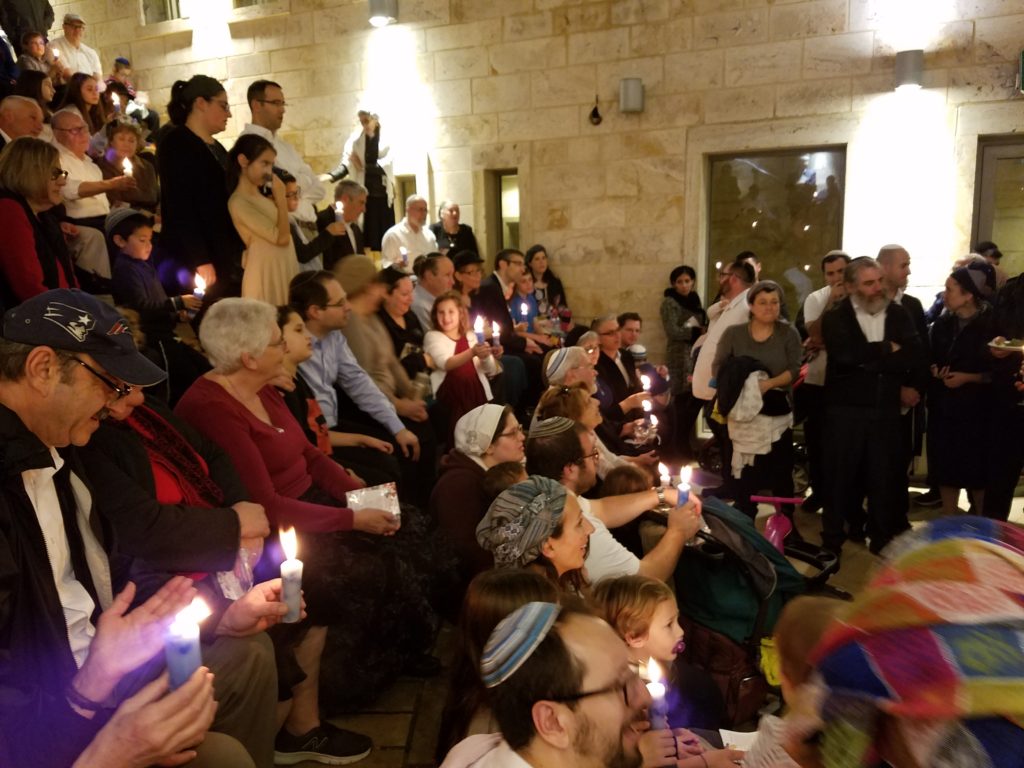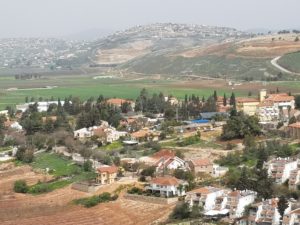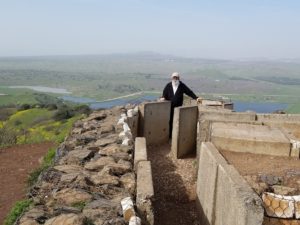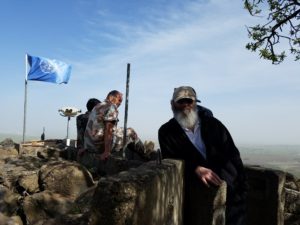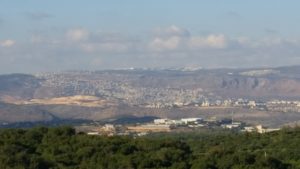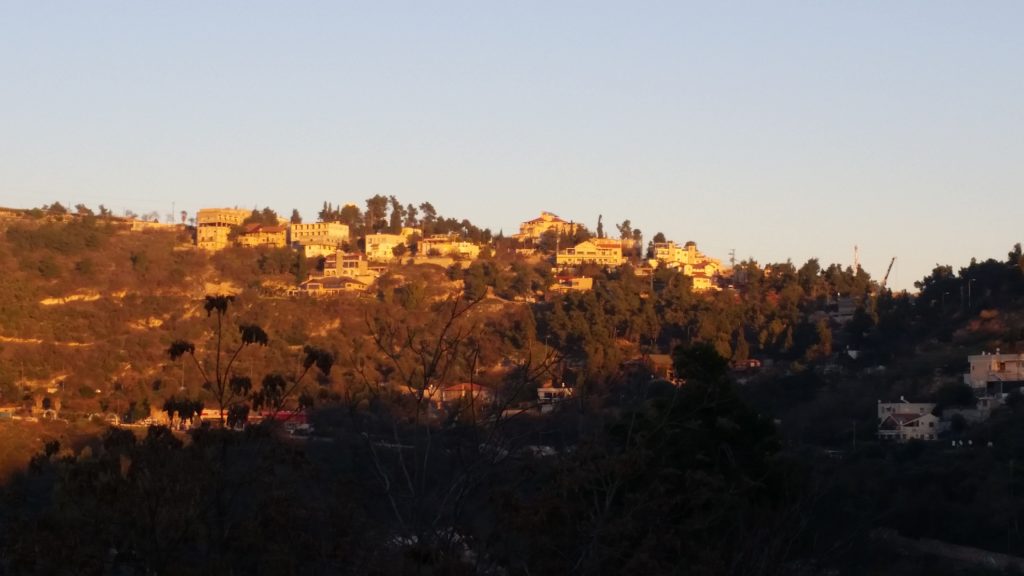
Last Shabbos we took part in an annual Shabbaton organized by “Go North” branch of Nefesh B’Nefesh – an excellent organization that is helping English-speaking Jews to make Alyah to Northern Israel. It took place in Acco (Acre), a picturesque and ancient port city close to Haifa. To get there, we took a bus Friday early afternoon in Tzfat, together with our friend and next door neighbour Tatyana and another couple from Tzfat. After only 1,5 hours ride we arrived to a totally different place from our home town. In Tzfat it was cloudy and cold – about 50 degrees , but Acco was sunny and hot – about 80 degrees. We found our way to the Hotel where we joined other participants – all together about 150 “Anglos” – Jews who made Alyah from US, England, Canada in recent years to various towns in the North of Israel .
There were people of all ages, families with little kids, as well as older people, and the excitement of approaching Shabbos was augmented by a joy of reuniting with friends and anticipation of new interesting encounters. We were especially happy to reunite with two couples of our long-time good friends, who made Alyah recently from Newton, MA and Lovell, Maine to two different towns in the North of Israel. We were also glad to see again some new friends we met during our pre-Alyah trip, and of whom we had a warm memory of kindness and generosity.
The event was superbly organized, with lively Shabbos services, eloquent divrei Torah, interesting speakers, good food. There was also a guided tour in the center of old city of Acco, where ancient buildings and stones keep the memory of illustrious Jewish sages landing in the port of Acco as the first point of their entry to Israel. One of them was Rabbi Nachman of Breslov, who landed in Acco at the same time as Napoleon suffered his first defeat in the Middle East in this city after conquering Egypt, and the Holy Land as far as Acco. Now Acco is still very alive and busy with commerce and tourism.
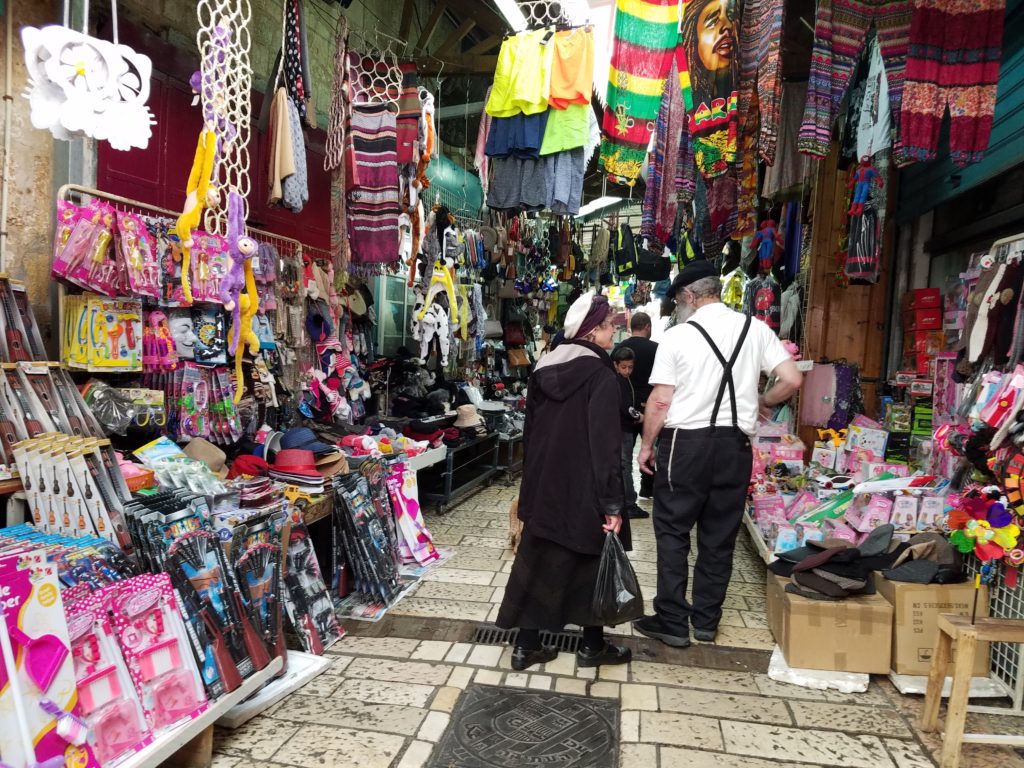
The main speaker for the event was Laura Ben David, who came with her young family to Israel on the first Nefesh B’Nefesh flight from the US in 2002. Her family settled in one of the communities of Judea south of Jerusalem. She shared her Alyah journey – a fascinating story of joining her country and people, and through this – discovering her true self, becoming a public speaker, writer and activist. Another speaker was a young immigrant currently in Israeli Army, who talked about his admiration and respect for high moral standards of Israeli Army, and his pride of being a religious Jew who is at the same time serving his country as a soldier.
The tables for Shabbos meals were set in a large hall, the food was beautiful, delicious and abundant, and not only tasty, but visually stimulating as well. It provided a perfect setting for conversations and singing at the tables, and we got to know more people who are on the same journey. There was an increasing feeling of unity of people happy with their choice to be part of Israel.
The culmination of the Shabbaton was a Havdala service, set in a large Amphitheater in the Hotel with everybody singing in unison beautiful Havdala melodies illuminated by many lit candles. There was a real feeling of “…like one man with one heart.”
The event was over, but people were reluctant to leave, and continued to talk and exchange phone numbers and email addresses.
We left grateful for being part of Nefesh B’Nefesh family – the organization that not only helps people to achieve their dream of living in Israel, but also provides the opportunities to be together and share their experiences.
